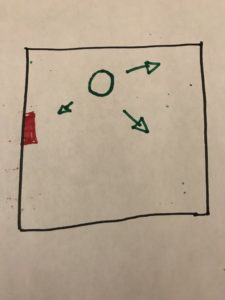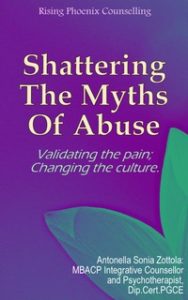All mental illnesses are surrounded by a lack of understanding as to what causes them and a lot of stigma and myths. One form of complex psychological condition which is often incredibly misrepresented and misunderstood yet draws much fascination is DID (Dissociative Identity Disorder), formerly known as and recognised by the term Multiple Personality Disorder.
The misrepresentation of this is often seen with the ignorant and negative and rather insulting portrayal of it by the media who uses it more often than not in horror films. It rarely depicts a true and accurate representation and rarely places individuals who suffer from it in a positive light, but rather a dark light where they tend to be the ones that commit the crimes in horror stories.
This invalidates the pain and experience of survivors and that feeling of being invalidated hurts in a way that cannot be erased. These negative labels and representations are not only inaccurate but painful to see and hurtful to sufferers.
The real truth and real horror lies within what happened to those who suffer from this. It is not a sign of madness, badness or criminality. It is a perfectly normal reaction to abnormal events; it’s a creative way of survival, of surviving horrors done to those who suffer from it. These horrors commence in early childhood when the individual was young, often experiencing repetitive and extreme abuse and unable to cope, too overwhelmed by indescribable and incomprehensible traumas and who developed DID as a means of survival.
The definition of dissociation is the disruption of the normal integrative processes of consciousness, perception, memory, and identity that define selfhood.
This copying mechanism tends to then become reinforced and conditioned and part of a normal way of being in order to keep surviving. It is a highly creative way where the child learns to adapt to the horrors it cannot escape. The child cannot escape the trauma physically so they find a creative way that allows them to “get away” by doing so mentally, emotionally, psychologically (through their heads).
What the child is trying to achieve is an extremely effective defence against severe physical and emotional pain, or the anxious anticipation that follows that pain. This process is thereby created by the child so that the child’s thoughts, feelings, memories and perceptions of the traumatic experiences can be separated off psychologically, allowing them to function as if the trauma had not occurred. Blocking the painful trauma allows survival of unspeakable mistreatment to escape and in doing so also allowing the escape from powerful emotions such as pain and fear/terror.
The result is a split in parts of self and fragmented memories. Each protector created by the splitting process becomes a different identify in itself yet all form part of the same person. In fact we all play different roles in life and act differently in each context. We may act differently with parents than we do alone with friends and act differently at work than at home even if our parts of self (unlike DID sufferers) are integrated.
We all dissociate at some level. In a mild form of dissociation where we may lose touch with conscious awareness of our immediate surroundings; examples include getting lost in a film or book, or when we forget where we placed our keys, or when we may have had a traumatic experience. As we can see dissociating is normal. DID is dissociating at a higher level and is therefore an extreme example and form of dissociating. The person with DID experiences memory loss that is too great to be explained by ordinary forgetfulness.
As we have seen, DID is a consequence of extreme abuse in early childhood. The genesis of DID therefore occurred due to the most typically extreme, repeated forms of neglect, physical, sexual and/or emotional abuse. Children that have been witnesses or subjected to different traumas such as war, torture, accidents, natural disasters, medical trauma, terrorism, sexual exploitation and abuse in other ways, such as but not limited to human trafficking, or sadistic ritual abuse have also developed DID.
90% of cases are believed to be linked with a history of abuse. The child doesn’t have the capacity to deal with such trauma and therefore the mind finds a way to cope and survive this, resulting in DID.
Many people can have more than two protectors – the average can go up to 14-15 and some can have up to 40. Each protector represents an event where abuse took place and each protector is given a job or purpose, such as the protector, the fighter, the child, the parent. Each one has different personality aspects and can be of any gender or age, regardless the gender of the person or their actual age.
The person experiencing DID isn’t always aware of the splitting process. The protector that manifests may be aware of another’s existence, but not vice versa. The protectors may be triggered by stressors. The various protectors may refuse each other, conflict with one another, be hostile to one another or not want to acknowledge the others existence. Depersonalisation can occur, which is defined as a state in which one’s thoughts and feelings seem unreal or not to belong to oneself. It is important to keep in mind that although these alternate personality states may appear to be very different, they are all manifestations of a single person. The condition involves identity fragmentation rather than a creation of separate personalities. Hence why the name Multiple Personality Disorder was changed in 1994, to a more accurate reflection of the condition and now referred to as Dissociative Identity Disorder.
Some individuals with DID may experience amnesia in the form of what is known as “dissociative fugues” which is a case where the person with DID travels and does not remember doing so.
People with dissociative disorders may experience any of the following: depression, sleeping disorders, addictions, panic attacks and anxiety, mood swings, phobias, PTSD, suicidal ideation, self harm, psychotic symptoms and eating disorders, along with physical ailments such as headaches, time loss, amnesia, spacing out and out of body experiences.
Unlike the media portrays, many people that suffer from DID are not evil or criminals – they have been victims of indescribable cruelty. They are good and normal people that deserve our understanding, respect and who are inspirational in their courage and strength.
It is important to highlight the the goal of therapy is not to eliminate a person’s protectors, but to embrace them and incorporate them into the person’s sense of oneness. There are ways that people can do the healing without being re-traumatised, in fact doing so in certain cases can prove damaging and dangerous. We need to go at the clients pace and respect this and respect that trauma can be healed without the need for details of the events. Other therapies that help are creative forms and cognitive treatment.
DID is a creative tool that the mind creates to survive; it is a normal response and reaction to abnormal events. Better understanding and representations are needed to help those with this condition and recognising the normality of this considering the events that led to it, we see how extraordinary the mind is, how it helps us survive and how extraordinary these people are who deserve our love and respect and for their condition to be portrayed accurately, and for this to be seen not as a defect but as the manifestation to trauma. Let us not ask what’s wrong with people who have mental illnesses but rather what happened. Many of these conditions are the result of human pain, not human deficits or madness. Let us give justice to this pain.





 Shattering the myths of abuse: Validating the pain; Changing the culture –
Shattering the myths of abuse: Validating the pain; Changing the culture –